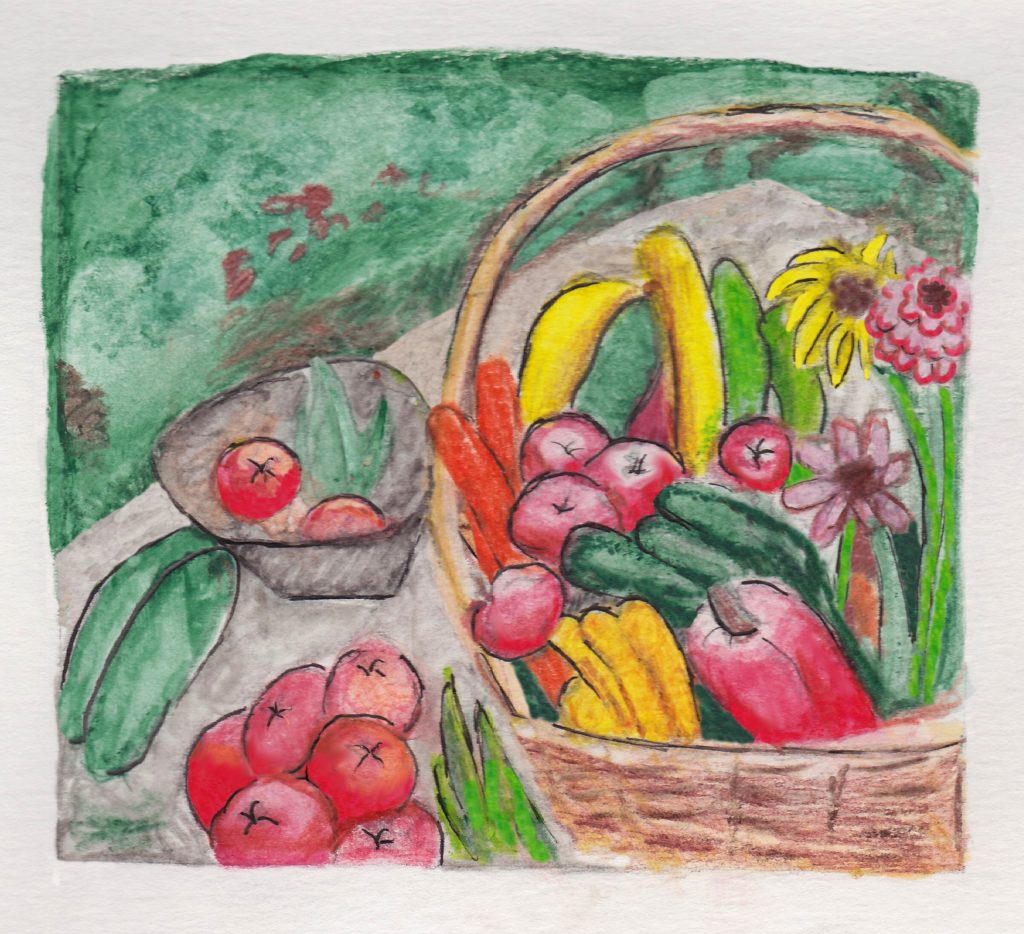Day 1
Come, Holy Spirit
Come, Holy Spirit, fill the hearts of Thy faithful and enkindle in them the fire of Thy love.
V. Send forth Thy Spirit, and they shall be created;
R. And Thou shalt renew the face of the earth. LET US PRAY.
O God, who didst teach the hearts of Thy faithful people by sending them the light of Thy Holy Spirit, grant us
by the same Spirit to have right judgement in all things, and evermore to rejoice in His holy comfort. Through Christ Our Lord. Amen
O Holy Spirit, sweet Guest of my soul, abide in me and grant that I may ever abide in Thee.
A Garden
There once was a young girl named Daisy. She wanted very much to grow a garden. Her father loved flowers and fresh vegetables grown in the garden, and Daisy wanted to try to grow them. Her mother was a very accomplished gardener and had grown things from when she, too, was very young. Her mother had developed problems with her hands, and so they were not very strong, and she could no longer do the gardening herself. If the family was going to have fresh vegetables, then Daisy was going to have to get busy.

She had heard many things about gardening. One must start with a seed. Each seed became a different vegetable or flower. Father was the one to provide the seeds. He chose what would be grown. Seeing Daisy’s excitement to help, Father gave her several small bundles of seeds. On each bundle read a different name.
Daisy had heard that soil would be needed. It was important that the soil was pure and free from disease or things that could damage the seeds. A tray was gathered with seven little clay pots. As Daisy lived in a place where the winters are cold and the growing season is relatively short, seeds often were started inside. When the plants were stronger, they were moved outside when the weather was more hospitable.
Planting began. Mother was right by little Daisy’s side as Daisy placed the first seed into the soil. “Not too deep,” Mother told her.
There seemed to be a perfect depth to placing the seed. Mother said that if it is too shallow, the seed might be washed away or become exposed when it is watered. When the seed was exposed and not within the soil, it was not protected and could become dried out and die. If the seed was too deep, then it might never sprout.
Once the seeds were planted, it was time to water. “Not too cold with the water,” Mother told Daisy. “Warm water is best. It will help to allow the seeds to germinate. The warm water tells the seeds it is springtime.”
The seed trays were placed on the radiators in the home. It was still February, and outside there was snow and wind. The radiators were busy keeping the house warm but also provided just the right amount of heat to help tell those seeds it is time to wake up and start growing. Sure enough, just as Mother had predicted, the seeds were up in less than two weeks. Little green sprouts were poking through the soil. It was very exciting!

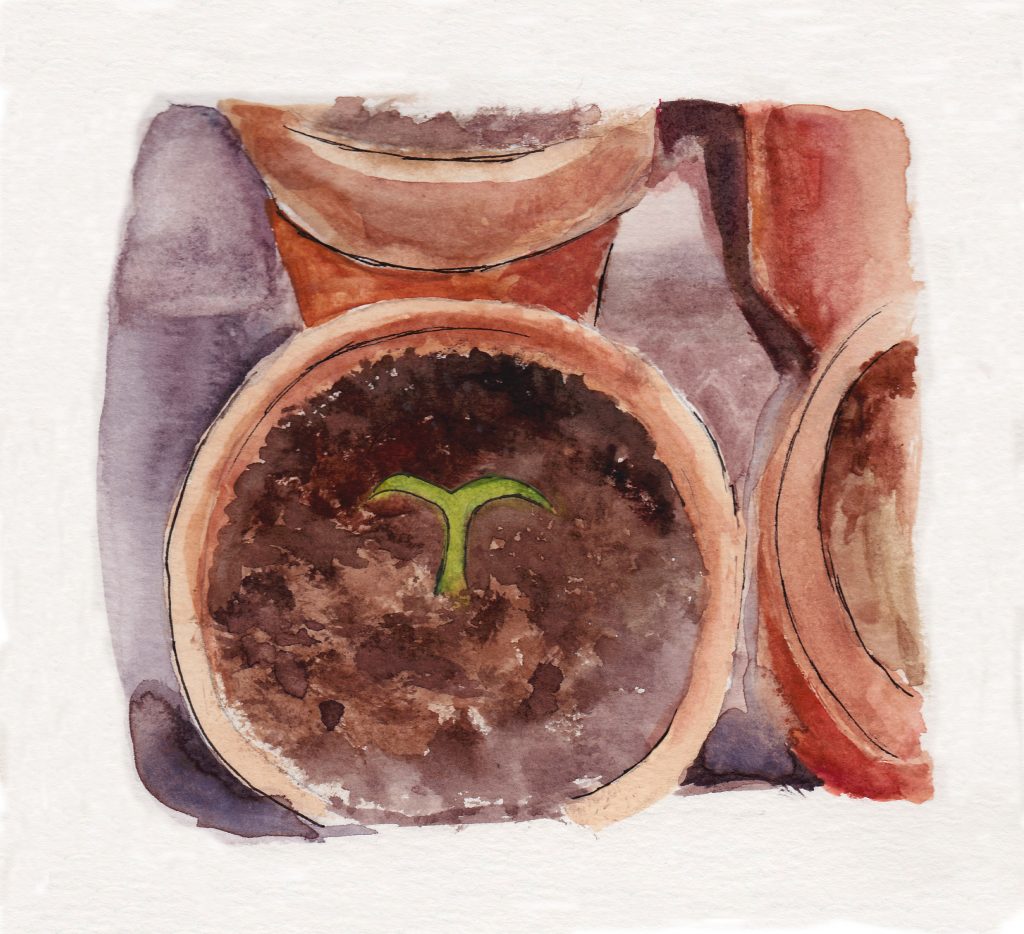
Daisy reflected: Mother was with me through the whole process. She had tried many things when she was learning to garden. She told me that she had tried growing the seeds only with sterile soil and adding water. She found that after a few weeks, they stopped growing. They were hungry for nutrients, but the soil didn’t have any. She told me that for a long time she grew the seeds only by the window but found the plants were long and spindly and would fall over. They were trying to catch a glimpse of the light and never could get enough to make them strong. The seeds, she told me, needed lots of light—many hours, in fact—and the light made their stems strong so they would not fall over. This was important because when they were big plants and ready to make fruit or vegetables, if the stem was weak, they would fall over, and then fruit would be damaged, or the plant could die.
There was indeed a lot to know when growing plants— too much for poor Daisy to know herself. There were many pitfalls she might fall into. But it seemed Mother had seen many things before when she was gardening herself and now always seemed to know how to avoid disaster. A long time ago, she had been as Daisy was now. Mother had learned from her parents many lessons in the garden. Father had also taught Mother many things. He had put her in charge of helping the children with their seeds. It was a good thing because it would have been much more difficult without her help.
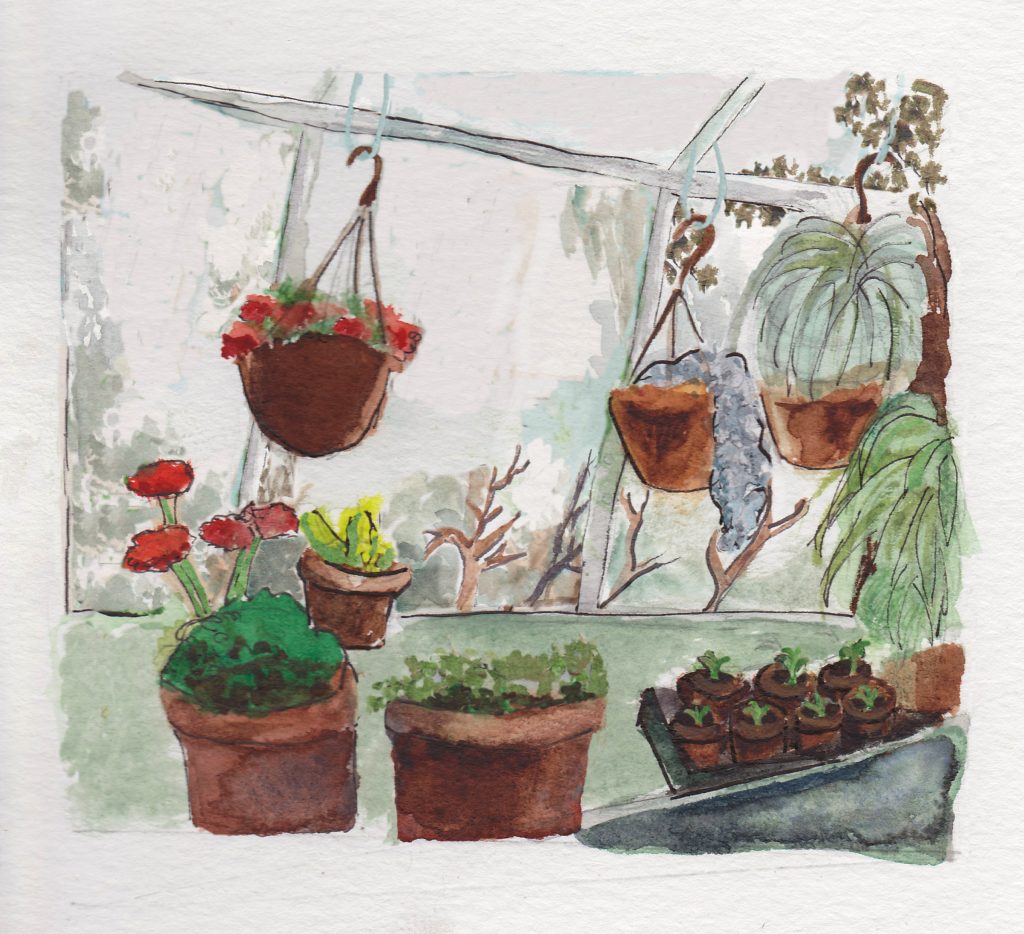
One of the things the small house had was an attached greenhouse. It was a sort of nursery for the young seedlings. The greenhouse was heated just enough so the plants would not freeze, but not too much as heating in the winter is costly. During the day, the winter sun would come across the house and warm the little greenhouse. The top half of the walls of the greenhouse were glass, and the roof of the greenhouse was glass as well. Red Geraniums Mother had kept from last summer hung in hanging baskets. If these plants were left outside through the winter, they would have died, but in the greenhouse they were protected and flourished. In the second week of February, Mother and Daisy noticed that for a half hour at 11:00 a.m., the greenhouse became very warm and toasty from the sun. With each passing week, the time lasted longer. The days, too, were getting longer, and the seeds could sense spring was coming. The plants that had been transitioned from the radiator to the greenhouse were now growing stronger. Mother showed how the seedlings needed nutrients in order to grow, so fertilizer was given periodically.
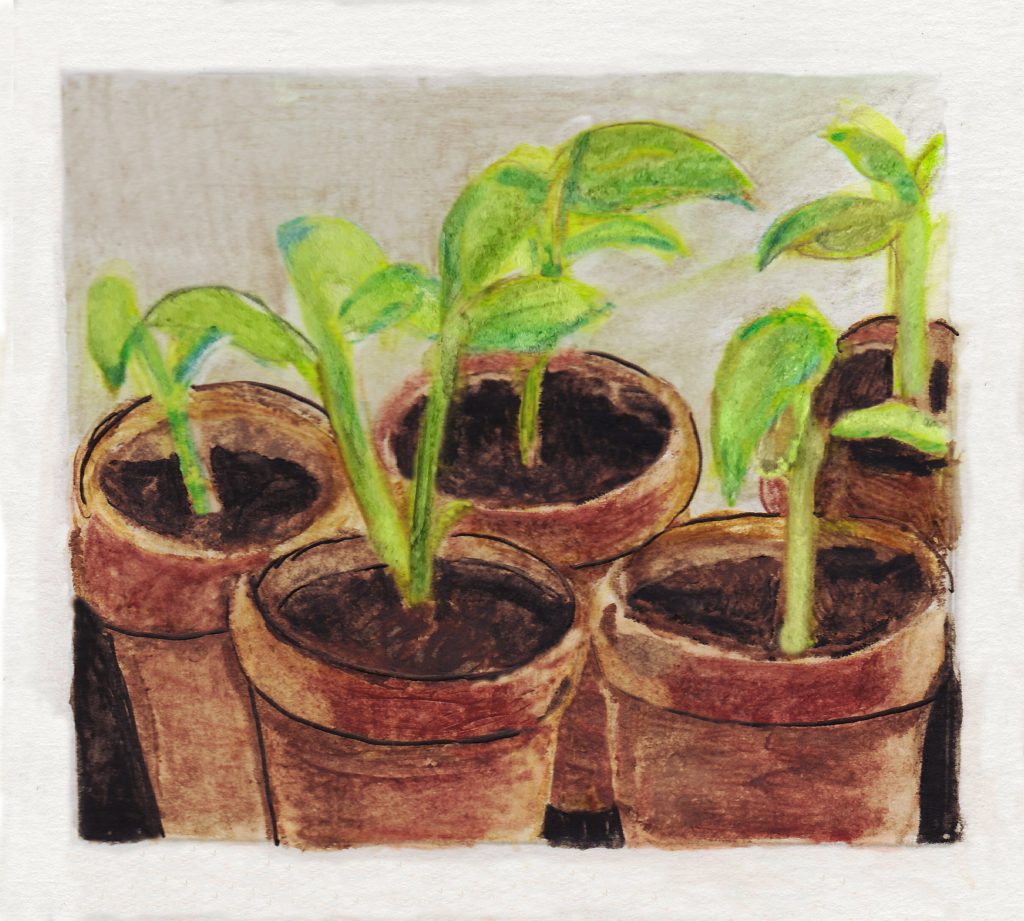
Daisy thought back on her experiences: It was a joy to come into the greenhouse with Mother. We looked over all our little plants. We had to be very careful not to miss watering any of the little cups. If any were forgotten, they could dry out. Small plants can’t withstand being dry for very long. Mother explained that larger plants have more of an ability to withstand such a drought, but little ones cannot. We had so much fun in the greenhouse! We could see the snow and ice outside, but inside the greenhouse we had spring two months early. It was work to go each day to water. Yes, indeed it was hard. One could never overlook a seedling, or else the plant would suffer and might die. But Mother was good at helping me remember.
As the days got warmer and the snow melted, Mother told me it was time to move the plants outside. It was also becoming a little hot inside the greenhouse as the sun was getting stronger. The plants were still tender. The transition would be slow. They would be brought outside for several hours a day, then brought inside. One could do the change all at once, but Mother was gentle to the seedlings and was teaching me the same gentleness. She did not want to shock the little plants as the
temperatures were still cold at night—not enough to freeze the plants, but still cold. A slow transition would allow the plants to get used to the cold temperatures and strengthen. This was something Mother called “hardening off.” Once the plants were used to these temperatures, it would be time for them to go in the garden. Well, not exactly. Work had to be done to the garden to ready it for the plants. This was something that was happening all year long, so the work was not too much in the spring. Mother had been putting little vegetable scraps from the kitchen into the garden and also ash from the fireplace. This enriched the soil and provided the food the plants would need to grow. The soil needed to be loosened, and then the little plants were set into the ground.
Spring was here, and summer came upon us very quickly. It was amazing how fast time went by! The fall harvest was approaching. Father would be coming to the garden to see the progress. He would be looking for the vegetables that were his favorites. We had been watching the plants grow. Little critters came and tried to take the vegetables, but mother had put a net over the plants so the animals could not take the fruit. We could see how the sun helped the plants grow and the rain refreshed the plants.
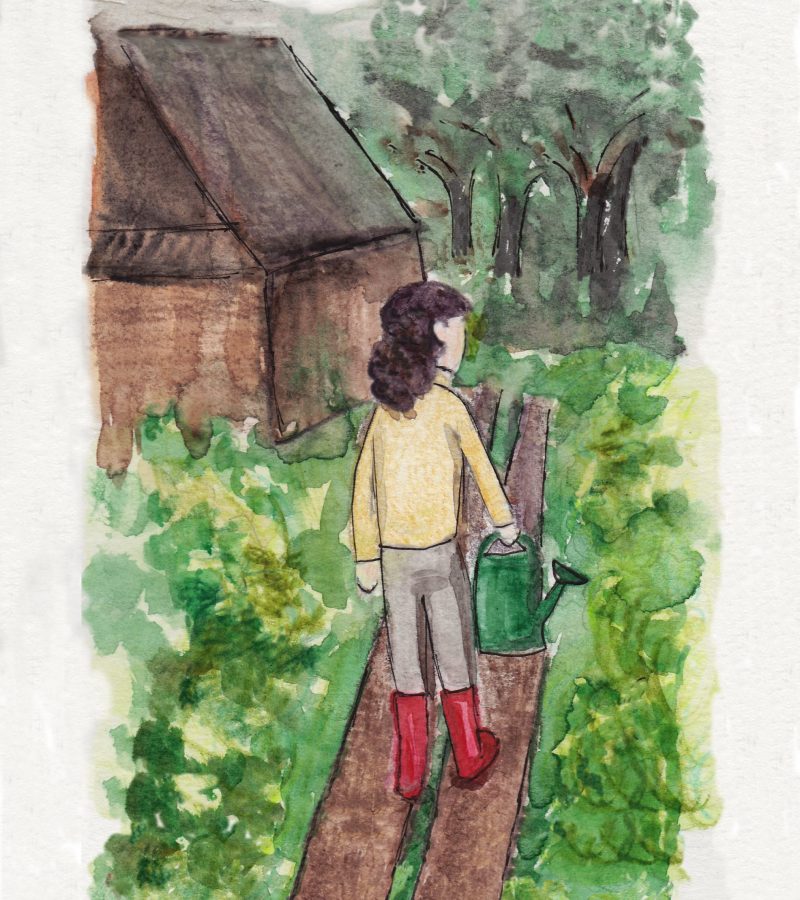
Daisy was in charge of watering as the bucket was too heavy for Mother. When it did not rain, Daisy watered. It was hard work, and she was happy to see the rain clouds come and to have a day or two to rest from her work. The rain always seemed to water the plants more deeply than the watering can. Mother was very happy with little Daisy’s progress. Sometimes Mother had to correct Daisy when she was not keeping up with the work. Mother would have liked to do the work herself, but she needed Daisy’s hands as her own were too weak.
But fall was quickly upon them. Harvesting had begun. Each item had to be harvested in a certain way so as not to damage the plants and to allow more fruit to grow. Mother showed Daisy how to get the biggest harvest that could be attained from the seeds entrusted to Daisy by Father.
Indeed, the day arrived when Father came to the garden. He saw all in order, and on the outdoor table everything was arranged. Daisy had carried the vegetables and flowers to the table, but Mother had arranged them on the table in just a way that they might be most pleasing to Father, as she knew him so well.
Father came to the table and smiled. He was very pleased. There would be a big surprise for little Daisy for all her hard work. Father would prepare a feast from all she had grown, and Daisy would be sitting right next to Father to enjoy it.
